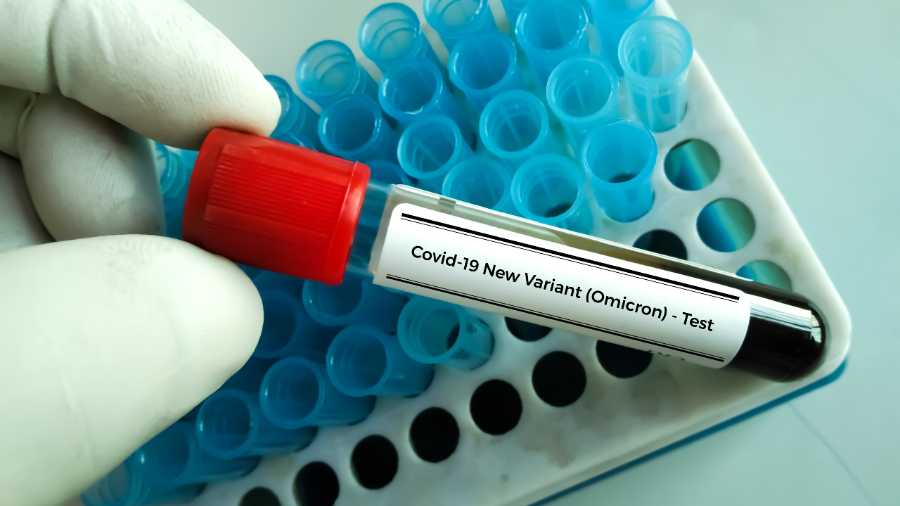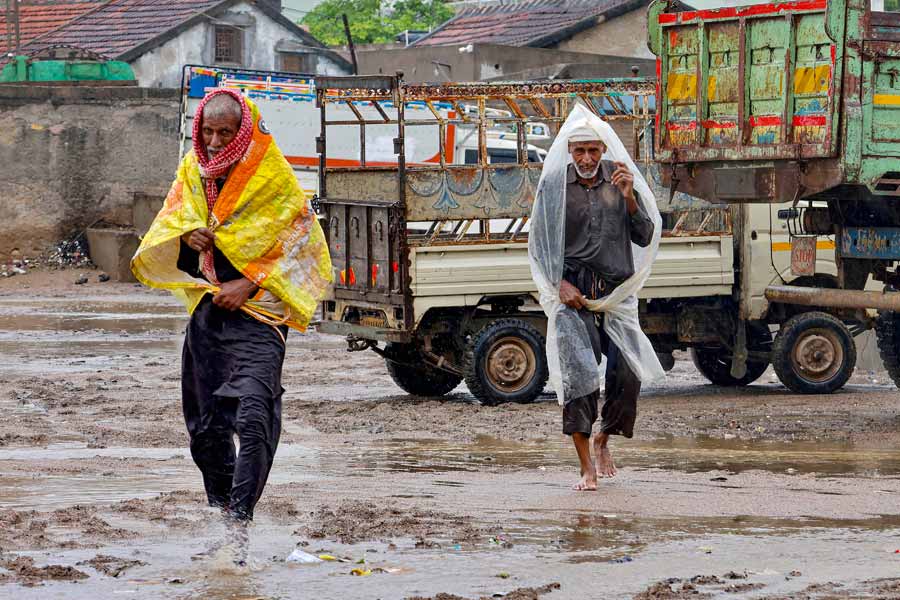India recorded a sharp 16 per cent fall in daily new Covid-19 infections on Tuesday in synchrony with an even steeper overnight drop in the number of tests, but signs of large epidemics persist in at least 409 districts in the country.
Health authorities documented 255,874 lab-confirmed Covid-19 cases, a significant decline overnight from 306,064 a day earlier, alongside an overnight decrease in the counts of diagnostic tests to about 1.47 million from 1.87 million a day earlier.
“The daily infections for now reflect the number of tests done,” said Oommen John, a physician and research fellow at The George Institute for Global Health, New Delhi.
“It’s only when tests remain stable over several days that we can determine the epidemic’s course.”
The seven-day average of daily new cases had increased 22-fold over three weeks, from 14,000 on January 1 to over 311,000 on January 24. But the highest count thus far — 337,704 cases on January 21 — is nowhere close to forecasts by some that the peak of the current wave might witness over 600,000 daily infections.
“Test-seeking behaviour has changed during this wave,” John said. “This is lowering case counts.”
A near-steady decline in new-infection counts in several large cities, including Calcutta, Delhi and Mumbai, over the past week has prompted health experts to suggest that the epidemic is shrinking in the metros and moving into smaller towns and rural areas.
But, experts say, the high test positivity rates — the proportion of positives among those tested — in the cities as well as smaller towns signal large epidemics and that an increase in tests would likely detect more cases.
The test positivity rates have been 10 per cent or higher over the past week in 409 districts across 33 states, including 18 districts of Bengal, according to the Union health ministry’s updated figures on Tuesday.
An additional 146 districts have test positivity rates between 5 and 10 per cent.
Health officials have said the positivity rates should ideally be below 5 per cent.
One indicator of the epidemic shifting from the metros towards smaller towns is the high test positivity rates in towns — 33 per cent in Nainital (Uttarakhand), 38 per cent in Wardha (Maharashtra), 46 per cent in Charaideo (Assam) and 48 per cent in Chittoor (Andhra Pradesh).
However, Manindra Agrawal, a professor of computer science at IIT Kanpur, said the overall India trajectory appeared to be tapering.
Multiple epidemiological forecasts, including one by Agrawal and his colleagues, had earlier this month projected the peak of the third wave at more than 600,000 daily new infections.
“At this point, we can only conjecture why the daily infections haven’t reached much higher levels,” Agrawal told this newspaper on Tuesday.
“Fewer tests, perhaps, but the change appears synchronous across several states. It is possible that even the mild restrictions placed by the states or districts have had some impact and lowered transmission.”











